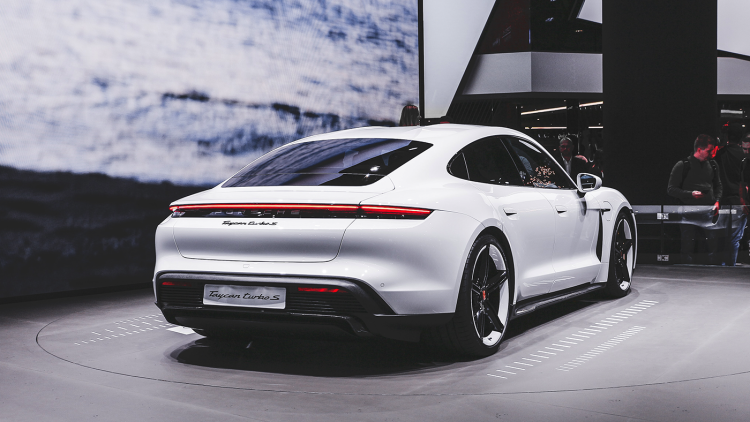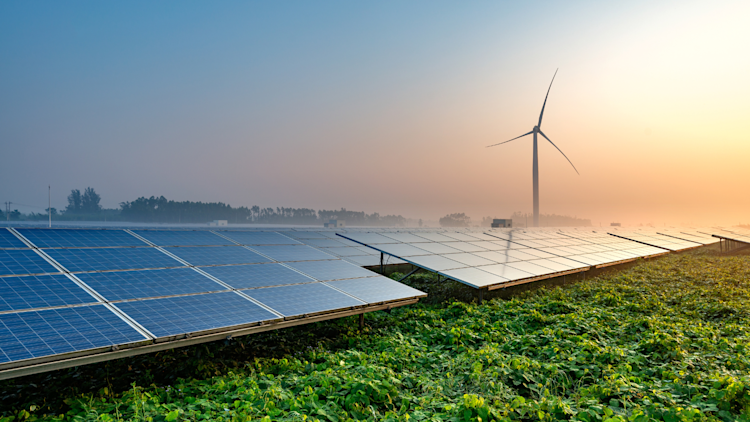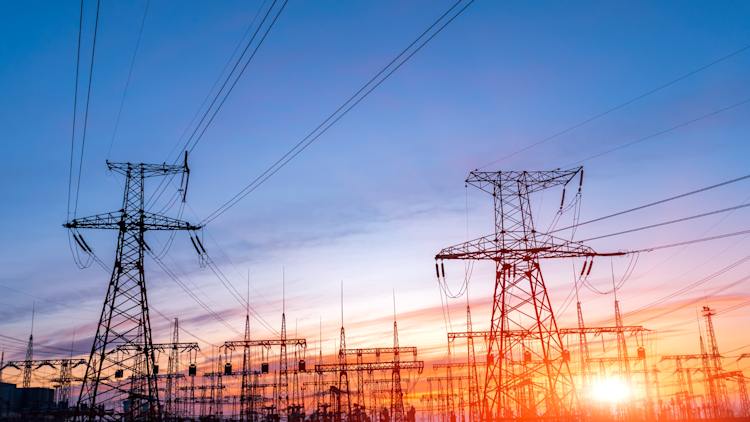Top 10 Reasons for Hope for Planet Earth in 2021, and Beyond
by ecobee on 01/04/2021 in Better Planet
8 min read

We believe that everyone needs and deserves a bright outlook on the future, and that a bright future is within our grasp.
In this post we look beyond the negative headlines to uncover some of the many reasons for hope in 2021 that we can meet the challenge of climate change.

10. The rise of Greta Thunberg and the climate activists.
A 16-year-old Greta Thunberg started skipping school to sit on the steps of the Swedish parliament with a school backpack and a little sign that read “Climate Strike”.
It is public opinion that runs the free world. In fact, every great change in history has come from the people.
In little over a year, her solo protest sparked a global movement of millions of people to stop climate change.
“It is public opinion that runs the free world. In fact, every great change in history has come from the people,” said Thunberg in a speech at the 2019 UN Climate Change Conference.

9. We have shown (recently) we can act as one.
We share a common fate on our planet and tackling climate change is going to take a global effort.
“We’ve never seen in human history such a large shift in behavior among such a large fraction of the human population happen so fast,” said Thomas Homer-Dixon, a Canadian professor studying climate change’s impact on society, in a recent interview.
We’ve never seen in human history such a large shift in behavior among such a large fraction of the human population happen so fast.
Homer-Dixon was referring to the early spring 2020 when within a few weeks 4-billion people locked down worldwide to slow the spread of Covid-19. The pandemic, he says, reinforces our sense of shared fate on this planet. He suggests that a similar shift in human behavior is needed to fight climate change.
Fortunately, the positive belief that we’re all in this together and must work together to keep the planet functioning properly is taking root.

8. Widespread (and growing) acceptance that climate change is real.
People are listening, and attitudes are changing. A recent Washington Post-Kaiser Family Foundation poll found that 8 in 10 Americans and 86% of teens agree that humans are changing the climate.
According to Pew Research, the percentage of Americans who see climate change as a threat to the wellbeing of the United States grew from 44% in 2009 to 60% in 2020, a clear majority.

7. Acceptance of global warming is leading to real change.
Greater acceptance by the general public is giving politicians the courage they need to take steps to fight climate change.
The world’s major polluters are getting in on the act in increasingly farsighted and audacious ways: The European Union recently announced plans to cut greenhouse gas emissions (GHG) by 55% by 2030; and in the U.S., the incoming Biden-Harris administration’s climate plan calls for decarbonizing the U.S. power sector by 2035.

6. This time electric vehicles are here to stay.
Electric vehicles (EVs) have been around for a lot longer than you might think. An electric-powered “motor carriage” was a “sensation” when it appeared at the Chicago World’s Fair in 1893.
As we all know, gasoline-powered cars and trucks came to dominate our roads and highways, and the air in our cities became thick with their tailpipe emissions. Today transportation generates almost a quarter of all global GHG emissions.
All that is changing. With the number of EVs on the world’s roads increasing from 17,000 in 2010 to 7.2 million in 2019, and Tesla becoming the world’s most valuable carmaker in 2020, electric vehicles are turning the tables on their gasoline-powered counterparts.
Modern EVs now offer all the comforts of gas-powered cars. “Range anxiety” is becoming a thing of the past as EV driving ranges steadily increase and charging stations proliferate. And there are now many more models and prices to choose from.
Yes, EVs tend to cost more up-front than gasoline-powered vehicles, but government incentives as well as lower maintenance and fueling costs over the life of the vehicle can offset the higher price tag, and result in long-term savings. Best of all, according to the Union of Concerned Scientists, “When the electricity comes from renewable sources, all-electric vehicles produce zero emissions to drive.”

5. Solar is now one of the most affordable sources of electricity in history.
For two-thirds of the world’s population, building a new solar or wind power plant is already less expensive than building a new fossil fuel plant. Indeed, according to the International Energy Agency (IEA), “Solar projects now offer some of the lowest-cost electricity in history.”
In 2014, the IEA forecast how the price of solar power would fall over the next half century. After just six years, we are 40 years ahead of their predictions.
In the coming years, the plummeting costs of renewables, in particular solar, will lead to the early closure of fossil fuel-powered power plants at home and around the world. The IEA forecasts that renewables will account for 95% of the global net increase in power capacity over the next five years.
4. Solar energy capacity grew almost 650 times between 2000 and 2019.
Forget exponential growth—the growth in solar between 2000–2019 was, well, astronomical. In 2000, solar made up less than a fraction of 1% of total global renewable capacity. By 2019, it had grown to over 10% of all renewables.
The International Energy Agency predicts renewables will overtake coal as the largest source of electricity generation worldwide in 2025.
Solar’s rapid growth is even more impressive because it happened while the amount of electricity produced by all renewables, including hydro, grew 1.5 times.
All of those new solar panels (and wind turbines) are setting the stage for an important milestone: the IEA predicts renewables will overtake coal as the largest source of electricity generation worldwide in 2025.
3. Battery storage prices are dropping fast.
Rapid technology improvements in batteries are resulting in a dramatic drop in their prices. This means that batteries can now provide an affordable and reliable way to store excess renewable energy for later use.
One thing dirty fuel sources like coal and natural gas currently have over renewables is their predictability. Both can be used to generate constant uninterrupted baseload power, and gas plants can be reliably fired up in minutes to meet demand.
Renewables complicate that picture. As more wind and solar power plants come online, there is a need for batteries to store their excess electricity as output increases. Competitive battery technology provides that solution.

2. There are already millions of jobs in the green energy sector with millions more on the way.
As of 2016 there were 9.5-million green jobs in America, nine times the number of jobs in the fossil fuel industry. This is despite the fact that the fossil fuel industry continues to receive enormous subsidies in the U.S. and from governments around the world (85% of all global subsidies).
The Biden-Harris administration seeks to create a further 10 million clean energy jobs in the United States over the next decade as part of its plan to decarbonize the power sector by 2035.

1. ecobee thermostats are in the fight against climate change.
Heating and cooling account for almost two-thirds of home energy use. That’s why installing an energy-efficient smart thermostat is one of the easiest and most effective ways to reduce your carbon emissions and lower your energy bill.
Since releasing the world’s first smart thermostat in 2007, ecobee thermostats have been installed in millions of homes across North America and kept over 7-million tons of CO2 out of the atmosphere. That’s like taking over 1.5 million cars off the road for a year.*
Smart thermostats like those from ecobee reduce your energy usage by learning your schedule and temperature preferences and automatically take advantage of energy savings when you’re asleep or away. And with the eco+ software update, ecobee thermostats can automatically pre-heat or cool your home more efficiently by using energy when it is less expensive and generated from cleaner sources.

It starts at home.
We can all make a difference in the fight against climate change and improve the air quality in our communities by choosing cost-effective energy saving solutions. And we can help our kids keep a positive outlook that is needed when confronting any challenge, large or small. It all starts with education and leading by example. In other words, it starts at home.
We are seeing significant progress to a cleaner, healthier world.
ecobee was founded with the purpose of changing the way people think about powering their homes, because we want a better tomorrow.
That founding principle still guides us, and we feel no differently on the issue of climate change: we are capable of making a better tomorrow.
“There is a long way yet to go, but with ecobee thermostats in more and more homes, electric vehicles that are already better than internal combustion engine vehicles, and renewable energy that’s not only the cleanest but least expensive energy available, we are seeing significant progress to a cleaner, healthier world,” said Stuart Lombard, ecobee founder and chief executive officer.
* Based on internal measurements of thermostat runtime data, ecobee smart thermostats have delivered more than 13.5 TWh of energy savings.
Did you enjoy this article?
Thanks for letting us know!






